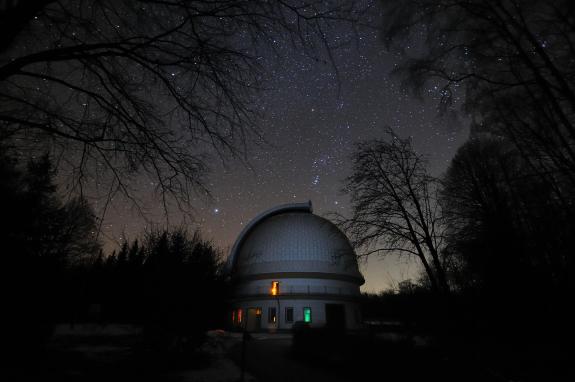The Thuringian State Observatory Tautenburg (TLS) is a non-university research institution of the Free State of Thuringia. It conducts basic research in astrophysics. The astronomers search for and characterize extrasolar planets, observe and analyse solar and stellar oscillations, research gamma-ray bursts, investigate the processes involved in star formation, study the structure and development of the Milky Way and distant galaxies and track down asteroids.
The TLS researchers use various telescopes for their observations - the 2-meter Alfred Jensch telescope for observations in the optical spectral range, the LOFAR radio telescope and various international telescopes. A third telescope - our solar laboratory - has just been put into operation. Instruments for continuous, automatic monitoring of the sun are being developed here.
The lectures will inform you about the current status of the research work. In the foyer of the building you will have the opportunity to observe the sky live with the help of our radio telescope.
The following lectures will be held in lecture hall 2:
18:00 - 18:45 Sylvio Klose: Cosmic gamma-ray bursts - spectacular stellar explosions in space
19:00 - 19:45 Markus Roth: The Sun - the star we live with
20:00 - 20:45 Veronika Schaffenroth: Star siblings
21:00 - 21:45 Matthias Hoeft: Of black holes and cosmic collisions
22:00 - 22:45 Aashana Tripathi: Asteroseismology - The sound of stars (!!! This talk is in English!!!)
23:00 - 23:45 Heinz Andernach: The sky in radio waves: Galaxies at the end of the universe
FOYER
18:00 - 23:50 Alexander Drabent: LOFAR - Live observations of the radio sky

